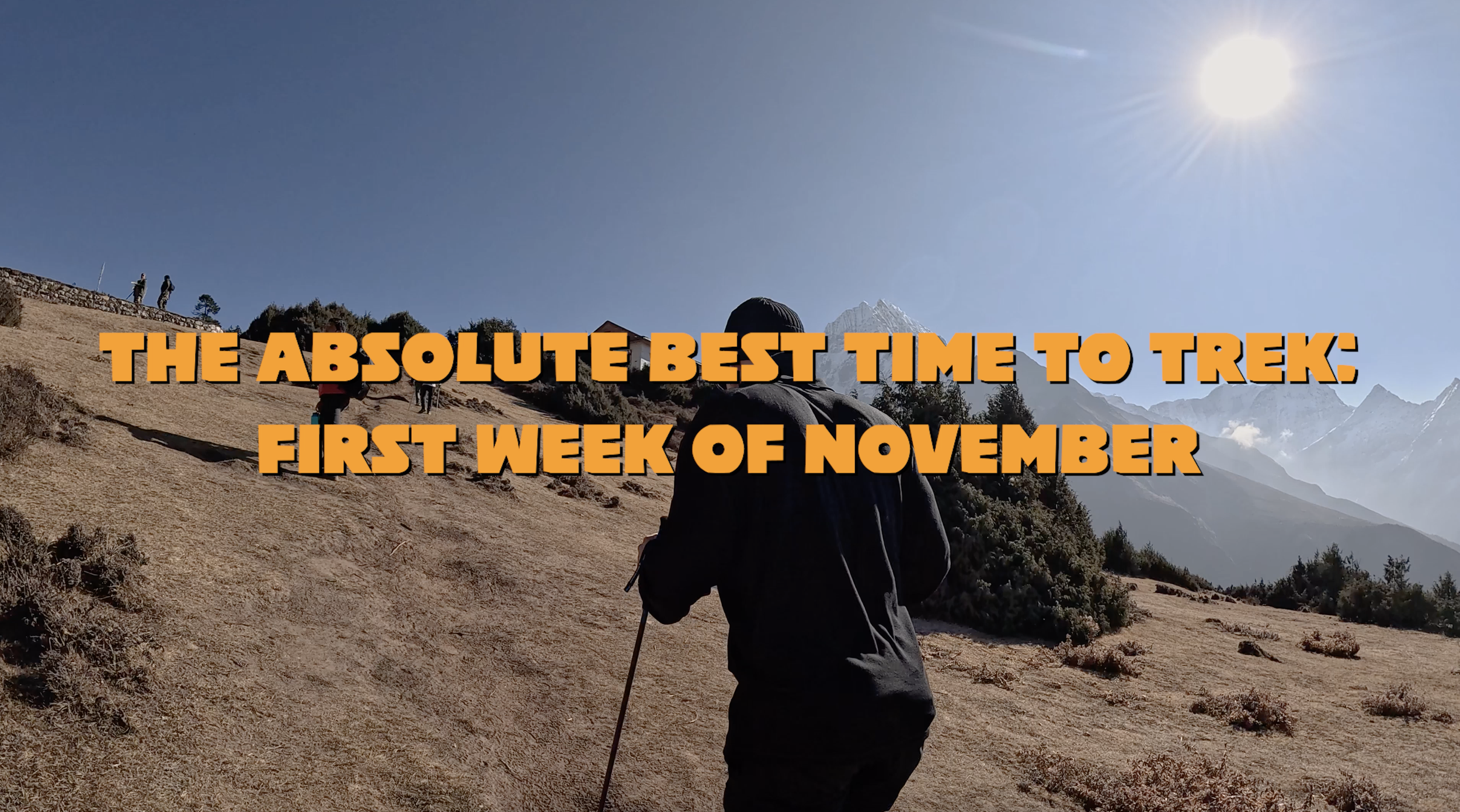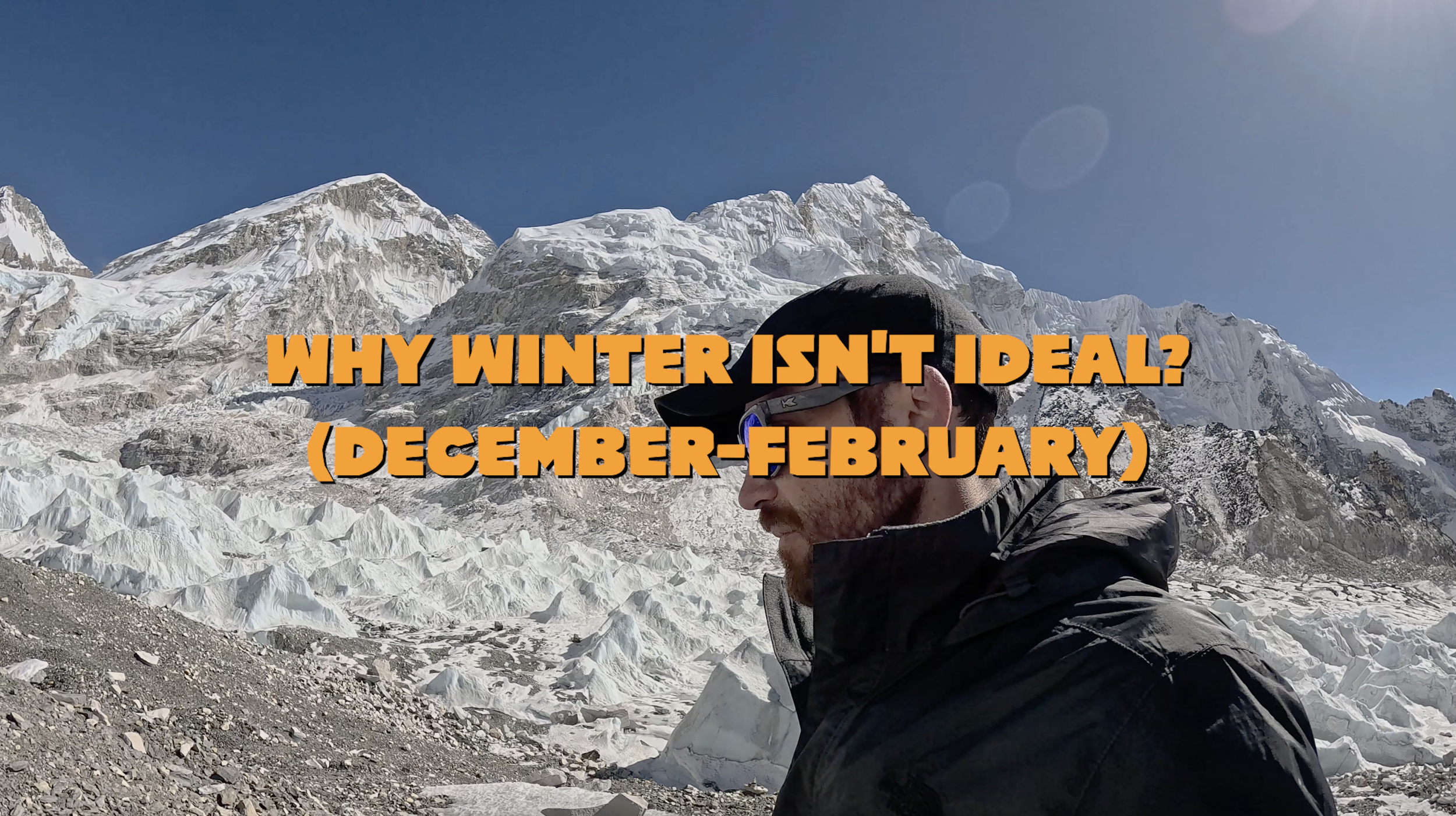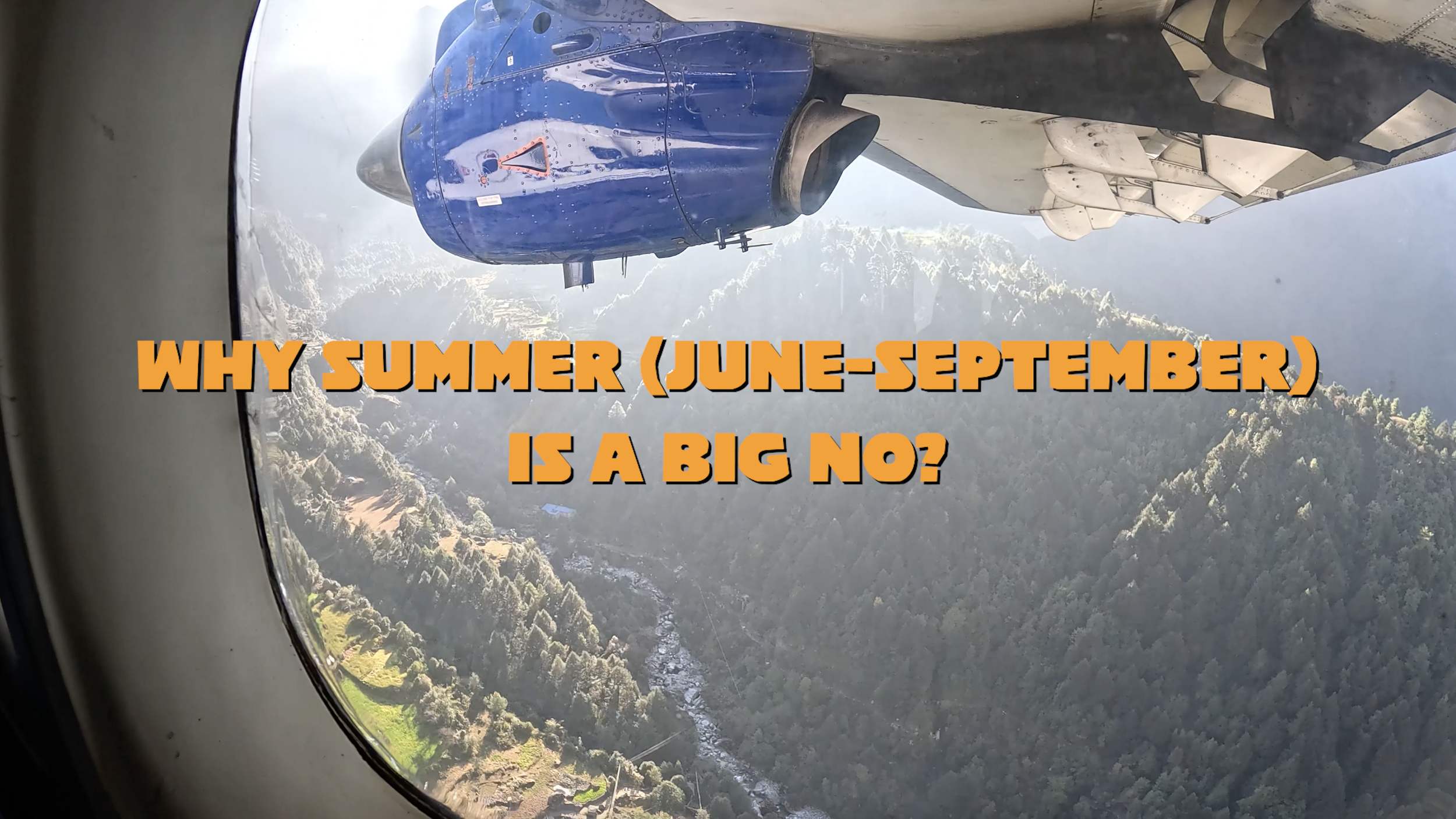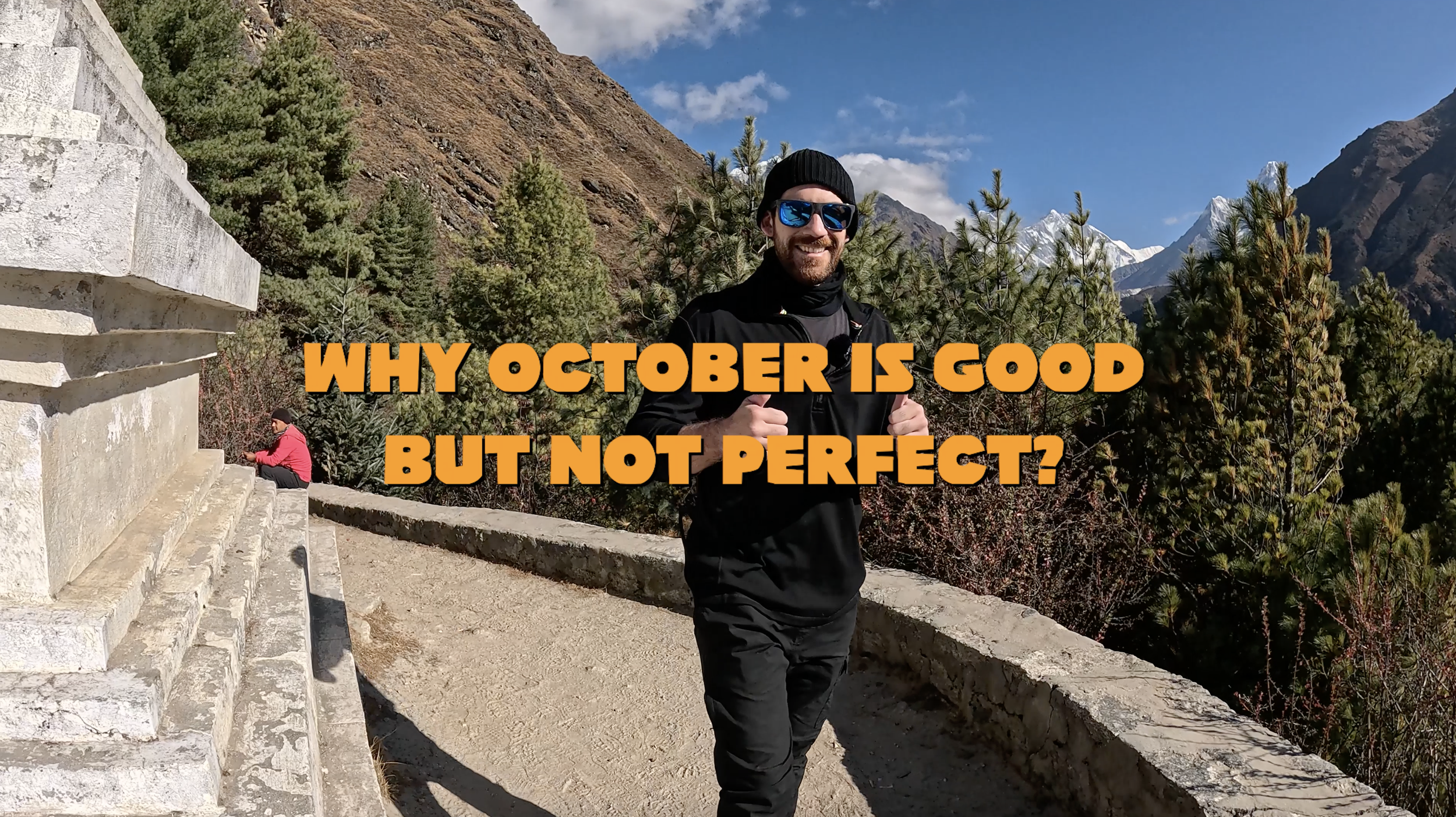Best time to trek Everest Base Camp
Trying to figure out the best time to trek to Everest Base Camp? Here's the honest truth—no fluff, no vague advice. This guide breaks down exactly when to go, why certain seasons are better (or worse), and what to expect in every month. Real tips, based on real experience.
The Absolute Best Week: October 28 – November 7
If you want the ultimate experience on the Everest Base Camp trek—one that combines clear views, fewer crowds, and fully open villages—then the first week of November is the gold standard.
Why? Simple:
Crystal-Clear Skies: The monsoon rains are long gone, the haze has lifted, and winter clouds haven’t rolled in yet. You’ll see the Himalayas in full, jaw-dropping clarity.
Moderate Crowds: October sees the biggest wave of trekkers, but by the time November rolls around, the numbers start to dip. That means quieter trails and better availability at teahouses.
Perfect Daytime Temperatures: Mornings and nights are cold, yes—but during the day, you’ll find the crisp, cool air ideal for hiking. No overheating, no sweating through layers.
Vibrant Local Life: Unlike deep winter, when villages shut down, early November still hums with activity. Shops, bakeries, and lodges are open, and the communities are lively and welcoming.
Unreal Photography: November is famous for giving you cloudless blue skies and snow-dusted peaks. Your sunrise and sunset shots will look like postcards.
Blue skies over the Himalayas—November gives you Everest at its most photogenic.
🥶 Why Winter (December–February) Is Brutal
Can you trek to Everest Base Camp in the dead of winter? Technically, yes. But would we recommend it for most people? Not a chance.
Frozen trails and silent villages—winter trekking is not for the faint of heart.
Here's what winter throws at you:
Extreme Cold: Temperatures regularly dip below -20°C (-4°F) at night. That’s frostbite-level cold. You'll need heavy-duty gear and the mental toughness to go with it.
Teahouse Closures: Starting early December, many of the guesthouses begin shutting down for winter. That means fewer places to stay and less warmth at night.
Risky Travel: Flights to Lukla are more likely to be delayed or canceled due to snow and high winds. Once you're there, getting stuck is a real concern.
Limited Social Experience: With fewer trekkers and shut-down villages, you’ll miss out on that vibrant, shared experience the trail is known for.
🌸 Why April is a Solid Second Best
If November doesn’t work for your schedule, April is an excellent alternative.
Spring blooms and Base Camp climbers—April brings color and high-altitude energy.
Spring Flowers: The lower trails explode with blooming rhododendrons and other wildflowers, adding color to your trek.
Climbing Season Energy: This is when Everest expeditions launch. You’ll see climbers prepping at Base Camp and get to experience the buzz of summit season.
Great Weather: The skies are still fairly clear in the mornings, and the days are warm without being too hot.
But April has a few drawbacks:
Crowds Return: Trekkers, climbers, and support crews flood the trail, especially mid-to-late April.
Dusty Trails: With more foot traffic, the trails get dry and dusty. You’ll want a face covering by mid-morning.
Clouds Increase Later in the Month: By late April, afternoon clouds become more common, occasionally obscuring views.
🌦️ Why Summer (June–September) Is a No-Go
Unless you love hiking in constant rain and mud, summer is the worst time to go.
Monsoon misery—clouds and leeches are just the start of summer woes.
Monsoon Season: Nepal’s summer is dominated by rain. That means slick trails, frequent landslides, and endless mud.
Zero Views: With clouds and fog almost every day, don’t expect to see any peaks.
Leeches: Yes, really. They love the damp lower forests, and they’re hungry.
Flight Chaos: Lukla flights are routinely delayed or canceled during this season.
🌤️ October: Good, But Not Perfect
October is the most talked-about month for EBC. And while it has many advantages, it’s far from flawless.
Iconic views—but with company. October means crowds on every ridge.
Stunning Weather: The monsoon rains are gone and the skies begin to open up. Great for views, especially mid-to-late October.
Comfortable Temps: It’s not freezing yet, and the weather is ideal for long days of hiking.
But…
Massive Crowds: October is the single busiest trekking month in Nepal. Trails, teahouses, and bathrooms are packed.
Rising Prices: With demand comes price hikes—on flights, gear rentals, and lodging.
Some Haze Early: If you go in the first half of October, you may still encounter some leftover humidity and haze.
🗓️ Final Rankings Recap
| 🥇 #1 | October 28 – November 7 | Best combo of clear skies, low crowds, and active villages | | 🥈 #2 | April 5 – April 15 | Spring flowers + climbing season energy | | 🥉 #3 | October 15 – October 25 | Clear views, but crowded and pricey | | ❄️ #4 | Late November | Very clear, but extremely cold and fewer amenities | | 🧤 #5 | Early December | Freezing temps, some closures; quiet and risky | | 🚫 #6 | June–September | Monsoon season—avoid at all costs |
🎥 Watch the Full YouTube Video
Want a visual breakdown and see what each season really looks like? Watch the full video: Best Time to Trek Everest Base Camp.
Check out the rest of my Everest Base Camp Series on YouTube for insider tips, full trek breakdowns, cost guides, and day-by-day itineraries.
👍 Like, 💬 Comment, 🔔 Subscribe — and get ready for the adventure of a lifetime.






